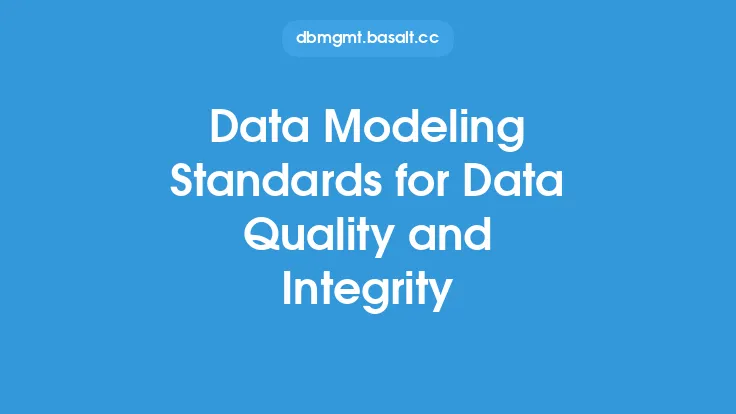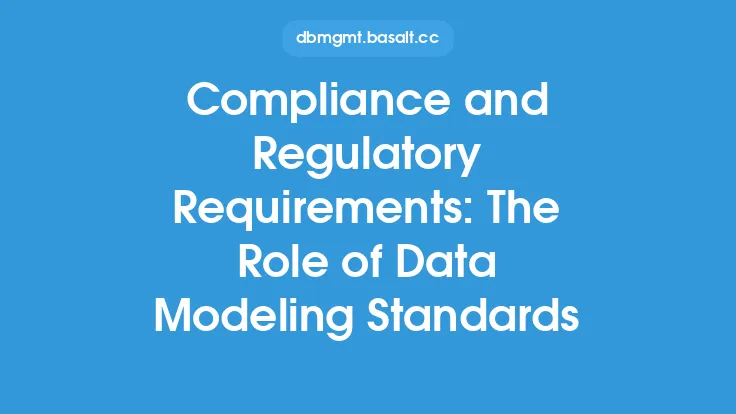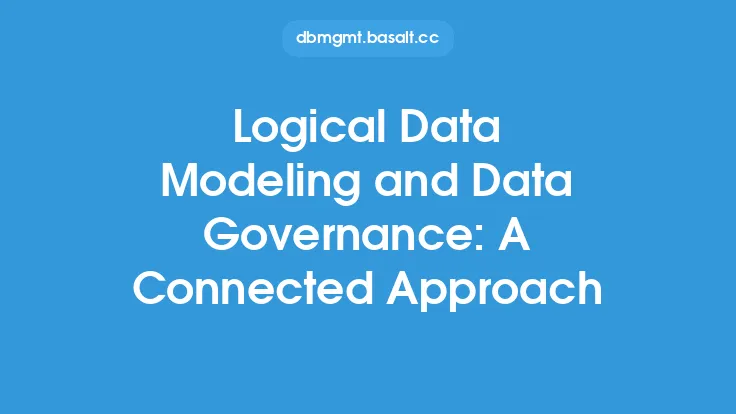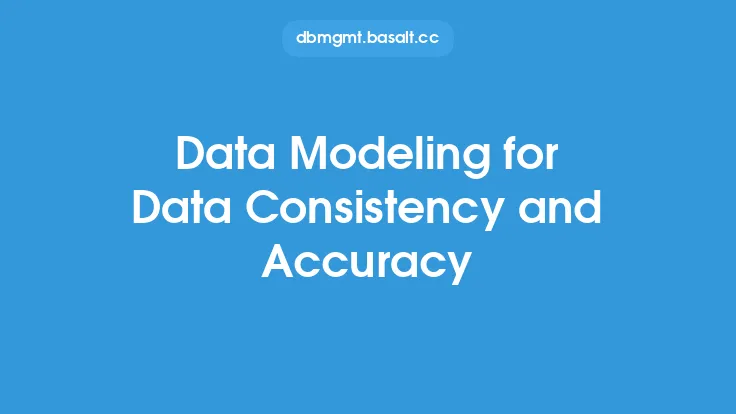Data modeling is a crucial aspect of data management, and establishing standards for data modeling is essential for ensuring data governance and security. Data modeling standards provide a framework for creating, managing, and maintaining data models, which are critical for organizing and structuring data in a way that supports business intelligence, analytics, and decision-making. In this article, we will delve into the importance of data modeling standards for data governance and security, and explore the key components and best practices for implementing these standards.
Introduction to Data Modeling Standards
Data modeling standards are a set of rules, guidelines, and best practices that govern the creation, development, and maintenance of data models. These standards ensure that data models are consistent, accurate, and scalable, and that they align with the organization's overall data strategy and architecture. Data modeling standards cover various aspects of data modeling, including data structure, data types, data relationships, and data integrity. By establishing and enforcing data modeling standards, organizations can ensure that their data models are reliable, maintainable, and adaptable to changing business needs.
Key Components of Data Modeling Standards
Data modeling standards typically consist of several key components, including:
- Data structure standards: These standards define the organization and structure of data, including the use of entities, attributes, and relationships.
- Data type standards: These standards define the data types used in the data model, including numeric, character, and date/time data types.
- Data relationship standards: These standards define the relationships between data entities, including one-to-one, one-to-many, and many-to-many relationships.
- Data integrity standards: These standards define the rules and constraints that ensure data consistency and accuracy, including primary and foreign key constraints.
- Data security standards: These standards define the access controls and security measures that protect sensitive data, including encryption, authentication, and authorization.
Benefits of Data Modeling Standards for Data Governance
Data modeling standards play a critical role in data governance by ensuring that data is managed and maintained in a consistent and controlled manner. The benefits of data modeling standards for data governance include:
- Improved data quality: Data modeling standards ensure that data is accurate, complete, and consistent, which is essential for making informed business decisions.
- Increased data integrity: Data modeling standards ensure that data is protected from unauthorized access, modification, or deletion, which helps to prevent data breaches and cyber attacks.
- Enhanced data security: Data modeling standards ensure that sensitive data is encrypted, authenticated, and authorized, which helps to protect against data theft and unauthorized access.
- Better data compliance: Data modeling standards ensure that data is managed and maintained in compliance with regulatory requirements, including data privacy and data protection laws.
Best Practices for Implementing Data Modeling Standards
Implementing data modeling standards requires a structured approach that involves several best practices, including:
- Establishing a data governance framework: This framework defines the roles, responsibilities, and processes for managing and maintaining data models.
- Developing a data modeling methodology: This methodology defines the steps and procedures for creating, developing, and maintaining data models.
- Creating a data model repository: This repository stores and manages all data models, including their metadata and relationships.
- Establishing data modeling standards and guidelines: These standards and guidelines define the rules and best practices for creating and maintaining data models.
- Providing training and support: This training and support ensure that data modelers and stakeholders understand the data modeling standards and guidelines.
Technical Considerations for Data Modeling Standards
From a technical perspective, data modeling standards involve several considerations, including:
- Data modeling tools and technologies: These tools and technologies, such as entity-relationship diagrams (ERDs) and data modeling software, support the creation, development, and maintenance of data models.
- Data storage and management: This includes the use of databases, data warehouses, and data lakes to store and manage data.
- Data security and encryption: This includes the use of encryption, authentication, and authorization to protect sensitive data.
- Data compliance and regulatory requirements: This includes the use of data governance frameworks and data modeling standards to ensure compliance with regulatory requirements.
Conclusion
In conclusion, data modeling standards are essential for ensuring data governance and security. By establishing and enforcing data modeling standards, organizations can ensure that their data models are consistent, accurate, and scalable, and that they align with the organization's overall data strategy and architecture. The key components of data modeling standards, including data structure, data types, data relationships, and data integrity, provide a framework for creating, managing, and maintaining data models. By following best practices and considering technical aspects, organizations can implement data modeling standards that support data governance and security, and ultimately drive business success.





